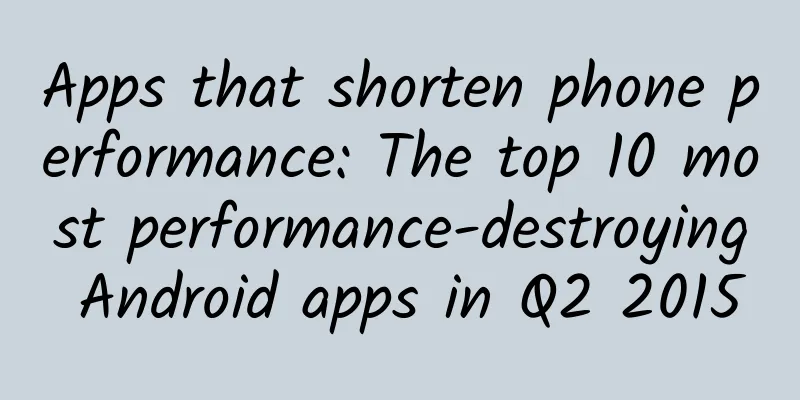Four obstacles shatter the 5G counterattack dreams of small and medium-sized manufacturers

|
Smartphone sales in the first quarter were dismal, but the 5G phones that were highly anticipated have shown signs of being successful sellers. Looking back to 2019, 5G mobile phones accounted for only a single-digit share of the overall market, but sales have soared in the past four months. According to IDC's latest quarterly mobile phone tracking report, in Q1 2020, domestic 5G mobile phone shipments were about 14.5 million units, accounting for 21.8% of the overall market, an increase of 64% from the previous quarter. The agency predicts that by the end of Q2 this year, 5G mobile phone shipments will account for more than 40%. Different from 2014 when 4G mobile phones flourished, although 5G mobile phones became popular in 2020, the situation of small and medium-sized players did not improve. It was not until May 8 that Meizu's first Snapdragon 865 mobile phone, the Meizu 17 series, was officially launched. Compared with the Xiaomi 10 series with the same chip, it was unveiled three months later. It has been 10 months since the first 5G mobile phone was launched. On August 5 last year, ZTE Axon 10 Pro 5G version was officially launched on the market with an official price of 4,999 yuan. It was the first 5G mobile phone sold in China at that time. Since then, the proportion of 5G mobile phones in new models has continued to rise. According to data released by China Telecommunication Technology Terminal Laboratory, 106 mobile phone products applied for network access in Q1, of which 57 were 5G mobile phones, accounting for 53.77%. Almost all domestic manufacturers, including Xiaomi, OPPO, Vivo, ZTE, Lenovo, and OnePlus, have entered the market. In terms of sales in the first quarter, Huawei dominated the 5G mobile phone market, accounting for 55.4%, and the second to fourth place also accounted for more than 40% of the market. In other words, although "second-tier" players led by Meizu and ZTE have actively entered the market, in the end, it is still the few large manufacturers that have won in the 4G era that have taken over almost the entire market. Every upgrade of communication technology is accompanied by a reshuffle of the mobile phone market. Why is the "reversal dream" of small and medium-sized manufacturers in the 5G era shattered? It has to be mentioned that 5G communication technology is an all-round evolution compared to 4G, and the threshold has been infinitely raised. From chips, hardware configuration to system software optimization and other aspects, it hinders small and medium-sized players from overtaking. The first obstacle: chipsThe 4G war began in 2014. At that time, there were dozens of chip manufacturers, such as MediaTek, Marvell, Broadcom, HiSilicon, and Qualcomm, which were all well-known chip manufacturers. At that time, small and medium-sized mobile phone manufacturers had many choices. Take Qualcomm as an example. In the first half of 2014, it launched the Snapdragon 800/600/400/200 series, covering the high, medium and low-end 4G chips. Together with chips from other chip manufacturers, this laid the foundation for the prosperity of 4G mobile phones. By April 2014, the number of 4G mobile phone models on sale in China's market exceeded 100, of which domestic brand 4G models accounted for 70%. The "oligopoly" phenomenon has intensified in the 5G era, and one very important factor is that there are too few 5G chips for small and medium-sized manufacturers to choose from in the market. As the technology and production process of 5G chips become more difficult, only four giants, Qualcomm, Huawei, Samsung and MediaTek, remain in the market. They also have their own problems, which further aggravates the problem of fewer 5G chip choices. Small and medium-sized manufacturers, which are already weak, have no "chips" to use and have to slow down or even temporarily abandon their 5G mobile phone strategies. For example, the Meizu 17 series was only released a few days ago, while Apple and Nut Mobile have not yet launched their own 5G mobile phones. Samsung and MediaTek launched 5G chips last year, but the market response was very cold. 5G networks are 100 times faster than 4G networks, and the requirements for chip performance have risen to an unprecedented level. In 2019, Samsung's 980 chip was used in Samsung and vivo's 5G mobile phones, but its performance was far weaker than Qualcomm's chip. In early February this year, Samsung released the Galaxy S20 series of 5G flagship phones, which are divided into two versions: Exynos 990 and Snapdragon 865. In some mainstream markets, this model of mobile phones mainly uses Snapdragon 865. Although Samsung insists that the overall performance of Exynos 990 is on par with Snapdragon 865, in its home market in South Korea, the move of all S20s to use Snapdragon 865 is undoubtedly tantamount to acknowledging Samsung's temporary "failure" in 5G chips. According to a report by Russian media on April 9, 2020, Samsung officially announced that they will abandon the development of the Exynos 990 chip and the research and development of this 5G chip. In this way, Samsung will not make any big moves on 5G chips in the short term. Last November, MediaTek officially released its first integrated 5G SoC, Dimensity 1000. ZTE was able to launch the first 5G mobile phone in China thanks to MediaTek's Dimensity 1000. However, in actual use, the performance of Dimensity 1000 is also far inferior to Qualcomm's 5G chip. In addition, MediaTek's brand impression of low-end chips in the past has led to the fact that after ZTE, only OPPO Reno3 is equipped with the low-end version of Dimensity 1000L, and no more 5G mobile phones are "willing" to use Dimensity 1000. Of the four giants, two are temporarily stuck in a "quagmire", leaving only two players, Qualcomm and Kirin. Kirin is never sold to the outside world, and domestic 5G mobile phones have become a multi-on-one battle between Qualcomm and Huawei. In the 5G chip war, Qualcomm did not have the first-mover advantage. Last year, Qualcomm's first Snapdragon 855 supported 5G network connections by plugging in the Snapdragon X50, but it lagged behind Kirin because it only supported 5G NSA single-mode networks. It was not until December that Qualcomm released the high-end Snapdragon 865 and mid-range Snapdragon 765 chips that support NA and NSA dual-mode 5G networks. However, due to limited production capacity, Snapdragon 865 can only satisfy large manufacturers with large shipments, while the mid-range Snapdragon 765 does not support the N79 frequency band, making it difficult for it to become a mainstream 5G chip. For example, high-end models such as Xiaomi, OPPO, and vivo all choose Snapdragon 865, while small and medium-sized manufacturers with a bit of "idealism" like Meizu would rather delay the launch of Meizu 17 in May than consider Snapdragon 765. The official mass production has only been in place for a few months, and the total production capacity of Snapdragon 865 is limited, but there are many manufacturers with purchasing needs. Small and medium-sized manufacturers will naturally rank behind Xiaomi, OPPO and Vivo because of their low shipments. In addition, in order to prevent manufacturers from "privately" starting a price war and destroying the high-end image of this chip, Qualcomm has recently made a mandatory rule that all mobile phones equipped with Qualcomm Snapdragon 865 5G chips must not be priced less than 3,000 yuan. This move led to the bankruptcy of the strategy of using low-price 5G to grab market share. Xiaomi, which had always been pursuing a price war strategy, also began to raise prices. With the Xiaomi 10 series taking the lead in raising prices by 1,000 yuan, other brands such as OPPO, vivo, and OnePlus followed suit. The cost price of the Snapdragon 865 chip is only 1,000 yuan. Qualcomm's special business model requires mobile phone manufacturers using the chip to pay patent fees to it, further increasing the overall cost of 5G mobile phones based on the Snapdragon 865. For example, Xiaomi and OPPO basically have to pay Qualcomm patent licensing fees ranging from 75 to 125 yuan for every 5G mobile phone sold using the chip. The high cost of chips has largely limited the survival space of small and medium-sized mobile phone manufacturers. As the other pole of 5G chips, Huawei's strategy was loosened in 2019, but it had little effect on alleviating the "hunger" for 5G chips in the market. On April 15, 2019, Huawei founder Ren Zhengfei said in an interview with CNBC that Huawei will open up the sale of 5G chips (Balong 5000) to other mobile phone manufacturers, including its competitor Apple. However, this opening up has a prerequisite: the Kirin chips we independently develop will never be open to the outside world. In other words, third-party chip manufacturers can choose to use the Balong 5000 as an external device to produce their own 5G chips. At present, this is only suitable for Apple, and it will not have much impact on other mobile phone manufacturers that do not have chip development capabilities. Huawei is reluctant to sell its Kirin processors to other manufacturers mainly due to two considerations. On the one hand, Kirin chips are manufactured by TSMC, and Huawei consumes tens of millions of Kirin chips every year, so it basically has no spare capacity to sell them to other companies. On the other hand, Huawei is also worried that other small and medium-sized mobile phone manufacturers will deliberately lower the price after getting Kirin chips and start a price war with Huawei. Industry insiders say that the high price of 5G mobile phones is largely due to costs, such as patent fees and manufacturing processes. According to JPMorgan Chase data, the chip cost of 5G mobile phones is about 1.85 times more expensive than 4G LTE. The cost of 5G baseband is not cheap either, costing about $33.40, while the processor that supports 5G network costs $55.60. In the 4G era, there are more chips to choose from, which provides small and medium-sized manufacturers with the opportunity to enter the market. This has objectively promoted the flourishing of the 4G mobile phone era. Pure Internet companies like 360 and LeTV can also "wade" into the muddy waters of mobile phones. 5G chips are expensive and have limited production. Currently, only Qualcomm can meet the 5G chip needs of mobile phone manufacturers, resulting in the absolute right to speak for the giant players. The arrival of the 5G replacement wave will bring new opportunities, but the lack of "chips" is the first "stumbling block" for small and medium-sized mobile phone manufacturers to realize their dream of counterattack. The second obstacle: other hardwareA 5G mobile phone is not as simple as just replacing a 5G chip. A 5G mobile phone means that it needs to process more tasks than a 4G mobile phone in the same amount of time, which in disguise increases the power consumption and processing power of the mobile phone, and each component has undergone a "major upgrade." The data transmission speed of 5G network is 100 times faster than the previous 4Glte cellular network, and the 5G network provides a faster response time, with a network response delay of less than 1 millisecond, while the response time of 4G network is 30 to 70 milliseconds. As the terminal carrier of 5G network, whether the hardware performance of 5G mobile phone has "shortcomings" determines whether users can experience the uncompromised 5G Internet service. In other words, 5G mobile phones have very high requirements in core basic hardware such as screen, flash memory, battery heat dissipation, camera, etc. In terms of screens, for models in the 5G era, what is needed is a screen with many advantages such as high resolution, high refresh rate, high brightness and high color gamut. As the main medium for human-computer interaction, the quality of the screen directly affects the user experience of the mobile phone to a large extent. To put it simply, the higher the comprehensive quality of the screen, the more delicate and smooth the picture display and interface transition effects will be, and such a 5G mobile phone will naturally be more enjoyable to play. The network speed is 100 times faster than 4G. If the screen is not good, it is like watching a black and white TV with broadband. Take the Huawei P40 series as an example. As Huawei's 5G flagship in the first half of the year, it uses the industry's first four-curved overflow screen. According to the official website, the repair cost of replacing the screen of Huawei P40 Pro is as high as 2,159 yuan, which shows how expensive this screen is. In terms of battery heat dissipation, since the running speed of 5G chips is much faster than that of 4G chips, the corresponding heat dissipation and power consumption are much greater, which requires strengthening the heat dissipation module of the mobile phone and increasing the battery capacity, etc. Many other components also need to be redesigned and strengthened, which increases the design and material processing costs. In terms of cameras, compared with previous 4G mobile phones, the number of 5G mobile phone cameras has increased from single camera to dual camera to triple camera to Huawei P30 Pro's quad camera. The earliest mobile phone cameras only compared pixels, but now they pay more attention to comprehensive performance PK, including the configuration of special lenses such as large aperture, ultra-wide angle, periscope telephoto, TOF, etc., which undoubtedly increased the hardware cost. In terms of flash memory, according to a report by Morgan Stanley, a well-known market analysis agency, the average cost of flash memory for 5G phones is 1.85 times higher than that for 4G phones. According to information from the industry chain, the average cost of flash memory for 4G phones is $59, which means that 5G phones will have to pay $40 more for flash memory alone. In other aspects, such as antenna costs, mobile communication technology has developed to the sixth generation. Except for the first generation technology which has been completely abandoned, 2G/3G/4G networks are currently in use. In the past, 4G mobile phones needed to be equipped with multiple antennas to receive 2G/3G/4G signals respectively, and now 5G antennas have been added. Compared with previous generations, the 5G network uses a higher frequency and greater attenuation, so more antennas need to be installed inside the mobile phone to maintain normal use. Due to various factors, small and medium-sized mobile phone manufacturers have to use new materials and adopt AMOLED screens to ensure user experience when launching 5G mobile phones. In addition, software and hardware optimization also requires a large number of R&D personnel to tackle the problem, which greatly extends the launch cycle of 5G mobile phones. For small and medium-sized manufacturers to be able to launch 5G mobile phones only three months later than mainstream manufacturers, like Meizu, is considered a good "performance". What is even more alarming is that excellent hardware suppliers in the downstream of mobile phone manufacturing have begun to become more centralized, entering an era of control by giants. The competition among smart phone manufacturers has actually evolved into a supply chain competition. Whoever has a more robust supply chain system and can get the core hardware earlier will have a stronger supply capacity and can meet consumers' spot demand to grab more market share. Frankly speaking, large-scale manufacturers can bring greater revenue and profits to component manufacturers, allowing them to have greater say in the supply chain, and even obtain additional support from manufacturers on core components, thereby having a certain period of exclusivity. On the other hand, for some scarce hardware, suppliers may even require advance deposits of hundreds of millions of dollars. Small manufacturers obviously cannot afford it, and even large manufacturers dare not easily participate in this game. Therefore, due to the dual disadvantages of size and funds, many small manufacturers cannot get the latest core hardware, and in many cases can only use the scraps left by large manufacturers. Although 5G is tempting enough, it is also a hot potato. It is lucky to be able to "survive" in the 5G era. It is undoubtedly a foolish dream to want to stage a counterattack. Today, the trend of the "Matthew effect" is becoming more and more obvious, and the voice in the hardware supply chain is gradually concentrated in the hands of leading players, which is the second "stumbling block" for small and medium-sized mobile phone manufacturers. The third obstacle: deep customization of system softwareAfter the birth of Android smartphones, there is a long history of flashing culture. Compared with iOS, the more open Android system allows different mobile phone manufacturers to "customize". A few years ago, some users bought a certain brand of mobile phone, but because they did not like the mobile phone system, they often chose a third-party ROM to "flash the system". In addition, Android phones will show obvious lag after being used for a year or more, which is also a reason for the prevalence of the flashing culture. As mobile phone manufacturers strengthen their R&D capabilities in system software, the experience of "native" OS of major manufacturers has begun to improve, and the culture of flashing has gradually faded from the stage of history. Some third-party ROMs have been shut down due to the disappearance of users. On March 11, 2015, Baidu Cloud OS announced that it would suspend updates. TencentOS stopped service on June 28, 2017. From the culture of flashing, we can feel that in the 4G mobile phone era, there is no need to deeply customize the Android system. A small team of dozens of people can create a third-party ROM. Xiaomi and Hammer, before making mobile phones, rely on creating a ROM to "accumulate" popularity. In the 5G era, the Android system, which originated in the 3G era, has become somewhat "incapable". If mobile phone manufacturers want to make a good 5G mobile phone, in addition to having a good 5G "chip" and a series of "high-end" hardware configurations, they must also face the new challenge of deep optimization of system software. On August 4 last year, in an interview with Caixin Time, Wang Jianzhou, former chairman of China Mobile, made similar remarks. He believed that 5G can of course continue to use the 4G operating system and can be used very well. However, if there is no upgrade or major change in the operating system, it will be difficult to surpass 4G in terms of functionality. By observing the existing 5G mobile phones, it is found that Huami, OV and other manufacturers focus on the following points in the deep customization of system software: 1. Network connection optimization; The three main features of 5G networks are high speed, large capacity, and low latency. For smartphones as receiving terminals, in addition to the hardware configuration of the receiving antenna, the underlying system optimization of the network connection is also very important. Xiaomi Mi 10 Pro has a built-in Multilink network fusion solution that supports 4GHz WiFi and 5GHz WiFi + 5G/4G mobile networks to avoid network fluctuations caused by poor WiFi signals. It supports turning on 5G/4G mobile networks for network acceleration, and the three networks concurrently ensure high-speed and stable network connections. OPPO Ace2 supports the quick network switching function, which allows users to quickly adjust the SIM card channel and switch between mobile data or WiFi. iQOO Neo3 not only supports dual Wi-Fi smart networks, allowing devices to simultaneously connect to two Wi-Fi networks with different frequency bands, 2.4Ghz and 5Ghz, but also adopts the Wi-Fi 6 standard. After connecting to a Wi-Fi 6 router, it can achieve a speed of 1.2Gbps. In the future, the three major operators will choose the NSA/SA dual-mode base station mode in the initial stage of 5G network construction, and gradually transition to the SA mode. Moreover, because 5G charges are too high, in order to allow users to enjoy the "super network speed" at home, in the company or other public spaces, supporting Wi-Fi 6 has become a consensus among 5G mobile phone manufacturers. In order not to compromise the user's 5G experience, R&D and innovation capabilities in network connection optimization have become increasingly important. 2. AI capabilities; 5G network connectivity is strong, and 5G chips have greatly improved the computing power of smartphones, bringing the video and imaging experience of mobile phones into a new dimension. Smartphones are the terminals for creating live broadcasts, short videos, images and other video works. The importance of AI algorithms is increasing, and it is difficult to meet user needs by simply stacking cameras on 5G phones. Taking the Huawei P40 series of mobile phones as an example, its hardware configuration can be said to be a very powerful camera phone. However, the AI photography algorithm has also ushered in new upgrades. This series of mobile phones has realized the "AI remove passers-by" function that can eliminate passers-by by taking pictures. The Xiaomi 10 series has also ushered in a significant improvement in the camera AI algorithm, and has developed many new functions based on AI, such as movie frame, new dynamic magic sky replacement, super night scene, etc. OPPO Ace2 has also updated the AI ultra-clear night scene function and added the ability to take dark light selfies in the front portrait. 3. Other innovations; The “upgrade” in the hardware configuration of 5G mobile phones has also led to some optimizations in the system. Most 5G mobile phones are equipped with high refresh rate screens. Take iQOO Neo3 5G as an example. This phone has launched a refresh rate adaptive function, which not only allows users to customize 60Hz, 90Hz, 120Hz, and 144Hz, but also supports smart switching. It can automatically identify whether you are operating the phone and dynamically adjust between different refresh rates to meet smoothness and power saving. Samsung Galaxy S20 5G series has launched the Samsung Game Booster function. When playing games, the Samsung Game Booster can not only monitor the phone's temperature and memory, but also remind users of the phone's battery life. At the same time, it can optimize the game to find the best balance between battery life, performance and temperature. Users can also use Samsung Game Booster to take screenshots to preserve the game's exciting scenes, lock the screen and hang up, and even reply to WeChat and messages in picture-in-picture mode. OPPO Ace2 supports 4D game vibration 2.0 function, supports triggering vibration through sound, image and touch recognition, and supports matching different vibrations according to different types of firearms. The most unique feature is that OPPO Ace2 supports the game barrage function, which replaces the previous banner notification with barrage, allowing users to enjoy the fun of the game without missing important messages, and supports independent adjustment of the number, speed and transparency of barrage. As a product of the 3G era, the Android system is also very applicable in the 4G era. However, the disruption brought by 5G networks has never been experienced by previous smartphones. In order to enable users to experience the real 5G experience on their phones, mobile phone manufacturers need to continuously optimize the system and software. Xiaomi and Hammer phones both started with third-party ROMs. Looking back, the level of system customization in the early days was not deep. On August 16, 2010, the first beta version of MIUI was launched. MIUI borrowed some iOS experience and focused on changes in operating experience. The first generation of MIUI made more innovations in the interface. Compared with the native Android system, it simplified the interface and operating steps, making the MIUI interface more user-friendly. In that era, making a smartphone was not a very complicated task. In order to provide users with a better experience, major mobile phone manufacturers launched their own OS. Since the Android system itself perfectly supported the needs of the 3G and 4G era, most of the changes were in some interactive details and interface UI level. Even so, in order to provide users with a customized Android with a good experience, major mobile phone manufacturers have invested a lot of manpower and material resources to continue to innovate. As revealed in Xiaomi's 2018 prospectus, MIUI alone has 2,275 employees, most of whom are R&D personnel, which is a considerable human resource expense. In the 5G era, the Android system has been "untouched" and transplanted to mobile phones, which has been stretched in many aspects. At this moment, the major mobile phone manufacturers are tested on their ability to deeply customize system software. From MIUI, we can see that polishing a good OS requires the participation of a large number of R&D personnel. In the 5G era, the in-depth optimization of smartphone systems has entered a new situation. Not to mention the cost of chips and hardware, most small and medium-sized manufacturers are far from able to afford the R&D investment in system software alone. The fourth obstacle: the benefits of sinking have also disappearedThe reason why the 4G mobile phone war was so prosperous was also related to the dividends of hundreds of millions of users in lower-tier cities at that time. According to CNNIC data, as of December 2013, the number of Chinese Internet users reached 618 million, and the number of mobile Internet users reached 500 million. By December 2015, the number of mobile Internet users reached 620 million. As of June 2019, the number of mobile Internet users in my country reached 847 million, an increase of 29.84 million from the end of 2018. In the years of rapid development of 4G, the number of mobile Internet users in China has also grown rapidly. From 2013 to 2019, the number of mobile Internet users has increased by nearly 350 million. With a population of 1.4 billion in China, the penetration rate of smartphones is already very high, excluding children and the elderly. Users will focus on price when purchasing a smartphone for the first time, but their second and third purchase decisions will become more mature. From the perspective of consumer psychology, consumers are most defensive when they purchase a new product for the first time, but after the second time, this risk and psychological pressure will quickly decrease or even disappear. The purchasing power of low-end users is not strong. When they buy smartphones for the first time, out of a defensive mentality, their mental accounts will prompt them to choose "cheaper" mobile phone models. However, as smartphones have become more popular in recent years, consumers' understanding of smartphones has transitioned from "immature" to mature. This trend has reduced the power of the "price war" commonly used by small and medium-sized mobile phone manufacturers. Last year, research firm Counterpoint released a report that the global smartphone market as a whole experienced negative growth in 2018. However, sales of high-end mobile phones (priced above US$400, or approximately RMB 2,693) continued to grow, with a year-on-year increase of 18%, the fastest growth among all price categories. This survey coincides with the hypothesis that the higher the mobile phone penetration rate, the less price sensitivity users will have when purchasing a mobile phone again. In the decade from 3G to 4G, a large number of new users entered the smartphone market every year, providing rare opportunities for many small and medium-sized manufacturers. As the first mobile phone, most new users may only require it to connect to 3G/4G network. In the process of using, they will gradually realize the performance shortcomings of thousand-yuan mobile phones, and when choosing the second or third mobile phone, the budget will continue to increase. In the past few years, through continuous technological innovation, Xiaomi, Huami, OV have stood out in the melee, and user loyalty has also settled during this period. In the past, small and medium-sized manufacturers could rely on launching low-end phones, gradually open up the market through volume, and then seek transformation. However, the current sinking dividend has disappeared, and the door to development from "quantitative change to qualitative change" has been closed. With all these unfavorable factors, it can be said without a doubt that the chances of success for small and medium-sized manufacturers in the 5G era to "rebound" are becoming increasingly slim. Perhaps, as Huawei's Yu Chengdong predicted two years ago, there will only be 2-3 mainstream mobile phone brands left in China in the future. |
Recommend
Gu Chuanling-Postpartum Nutrition Course
Gu Chuanling-Postpartum Nutrition Course Resource...
Transformed into a "screenless TV", can smart projectors project the future?
Taking advantage of the demand for watching footb...
From Roewe RX5 to MG ZS, why are Alibaba's Internet cars more reliable than Tesla?
Alibaba, which recently teamed up with Roewe to l...
Ye Maozhong's "Conflict Marketing Theory" (19 lessons) audio
Audio resource introduction of Ye Maozhong's ...
How was Emperor Wen of Sui's favorite fruit transported from Sichuan to Shaanxi? | BoLan Daily
Emperor Wen of Sui's favorite fruit. How to t...
Small Animals, Big Contributions: Scientific Understanding of Laboratory Mice
When people are testing drugs on themselves, they...
AI can accurately identify baby's age and gender based on "temperament"
It can be difficult to tell whether a newborn is ...
Don't play with your phone while lying on your side! Netizen: I'm so scared, I won't dare to do it next time...
Did you have a good time on May Day? Some people ...
App Promotion Tips: How to Promote a New App?
Since I often write about App promotion, friends ...
The new idol era: fan economy and social platforms reconstructed by live streaming
WeChat still throws out easter eggs from time to ...
How come mini programs support opening mobile apps?
According to the article "Mini Programs Supp...
Ukrainian beauty blessing_sand painting production_innovative birthday blessing gifts_recruiting agents
Why is the short video of a Ukrainian beauty hold...
iPhone 6 screen is prone to damage! Do you use a screen protector or not?
Apple's iPhone has finally become bigger, and...
Important breakthrough in the development of coal-to-olefin catalysts! In addition to direct burning, coal has greater uses
Produced by: Science Popularization China Author:...
China Passenger Car Association: Analysis of the national passenger car market in November 2020
1. Review of the national passenger car market in...









